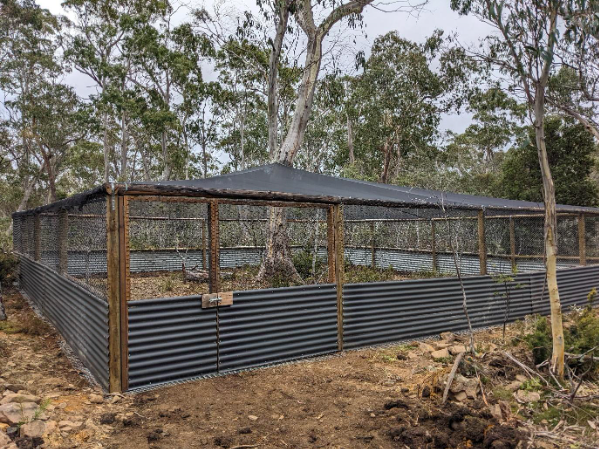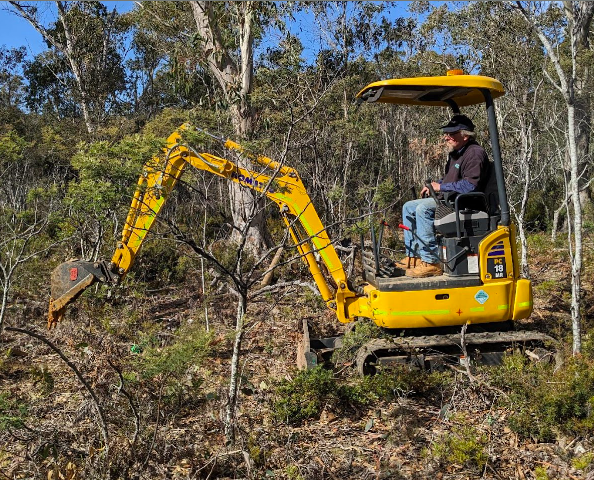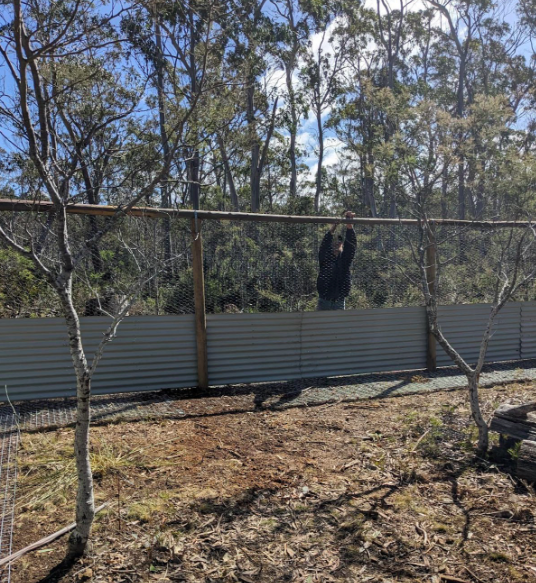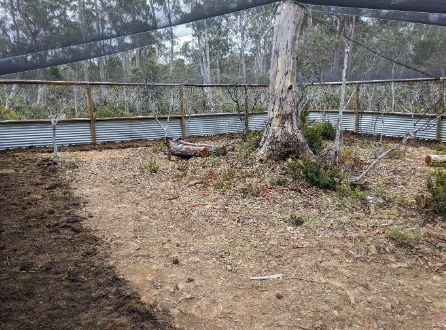RETURNING WILDLIFE TO THE WILD
Through the generous support of WIRES, Saffire Freycinet and regular donors, the Wildlife Rehab and Release cause of Wildcare’s Tasmanian Nature Conservation Fund supports projects that rehabilitate wildlife for return to the wild.
In this story, Wildlife Rehabilitator, Natalie, outlines how she completed such a project.
_____________________________________________________________________________________________________________
With funding from a Tasmanian Nature Conservation Fund grant, this masterpiece was completed this month! A pre-release enclosure suitable for a huge range of species, this beauty provides the perfect temporary home to become accustomed to life in the wild 🌳. The biggest thanks to my partner Steve who gave up a huge chunk of his time to build the most perfect space for our precious wildlife. I really felt the community love this week, with help from some very special neighbours to finish this project and a delivery of bedding hay for the wombats ❤️
The project started with selecting the location of the enclosure. The location was based on accessibility, minimal amount of clearing, distance from the main road and with elements of the natural environment. The area was measured, pole holes dug and a one metre area cleared around the inside using the excavator. The mesh was laid around the inside perimeter and corrugated iron installed on the bottom section of the enclosure. Trees were cut from the plantation on the property and used as middle and top bracing beams. Nylon fencing was installed around the top area of the enclosure and access gates framed and installed. The mesh was covered with top soil, bracing rope tied and connected to the centre tree and finally the wildlife friendly netting was installed over the enclosure.
- Taking shape – mesh and iron sheets fitted
- The beginning of the project – digging post holes
Although there was an abundance of locations to choose from, I selected this area to have one large tree in the middle to connect the netting to. The enclosure was planned to be 10x10m2 however I decided to utilise the area selected and increased the size to 12x12m2. The digging was a lot easier than expected (even with the excavator it can be difficult with the rocks) so we were able to get the poles deep enough to not require concrete. The netting also went on more easily than expected as it can be tricky to work with. I decided to put the poles on the inside of the enclosure (originally I was going to put them on the outside to prevent climbing and chewing) as I considered other animals climbing up the outside being more of a risk.
I tried to minimise any on site challenges by ensuring I considered all construction options and discussing at length the planning with my partner Stephen (for example, I revised the netting plan a few times to ensure optimum installation).
- More hard work – Mick, Karen and Joseph
- Stephen – hard at work!
A total of seven volunteers contributed to this project. My exceptional partner Steve completed the operation of the excavator and the construction of the enclosure. My neighbours Margaret and Russell put up the netting and my other neighbours Mick and Karen and their son Joseph helped to shovel and cart the top soil. I assisted at all stages of the project (except the excavator work and tree felling!).
Estimate of volunteer hours – Steve: 60 hours; Natalie 30 hours; Margaret & Russell 3 hours; Mick, Karen & Joseph 2 hours (Total = 95hrs).
The intended outcome of providing a safe and natural pre-release enclosure whilst minimising land clearing has been achieved. The wildlife in care that will utilise this enclosure now have ample opportunity to become accustomed to the environment which they will be released into, which will increase their success in the wild. The completion of this enclosure allows for a wide range of species from possums to devils, bettongs to wombats, to be rehabilitated and soft-released back into the wild. I currently have three wombats and two pademelons in care who in a few months time will be calling this enclosure their temporary home.
This enclosure is a continuation of best practice rehabilitation from start to finish.
My ethos of reduce, reuse, recycle was front and centre in this project when I was able to source excellent quality nylon fencing that was destined for landfill. I also sourced second hand roofing iron sheets which reduced not only the cost but also the impact on the environment.
Support projects like this by donating to the Wildlife rehab and release cause today!






